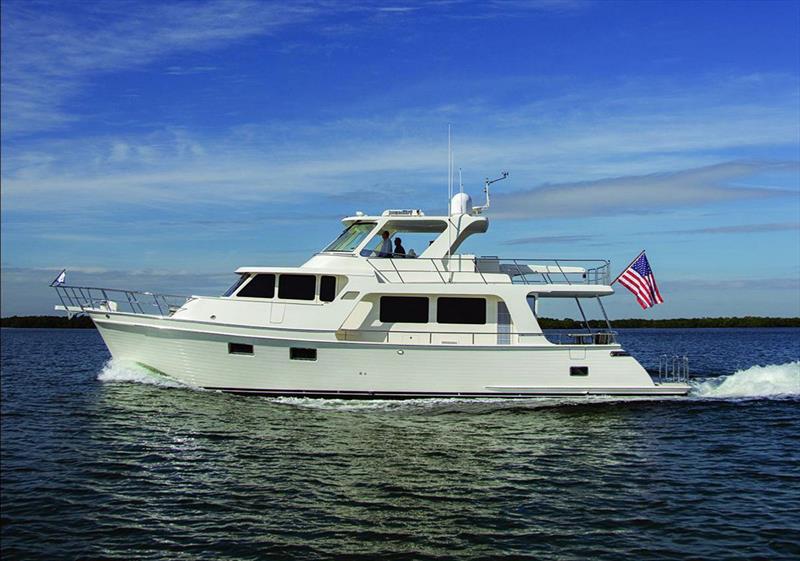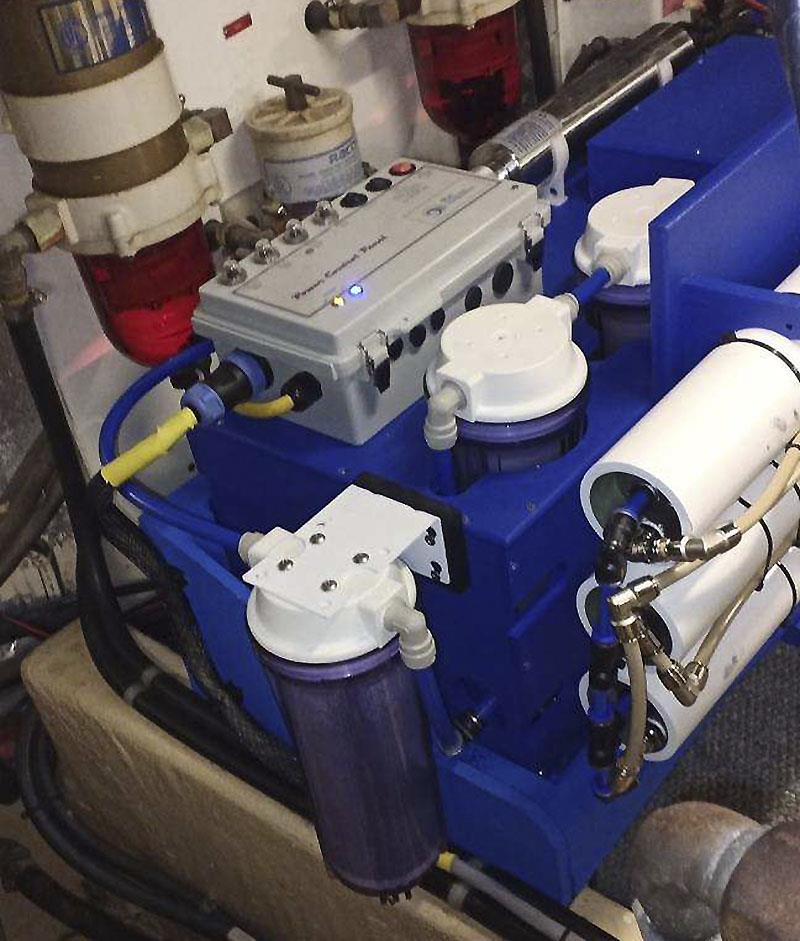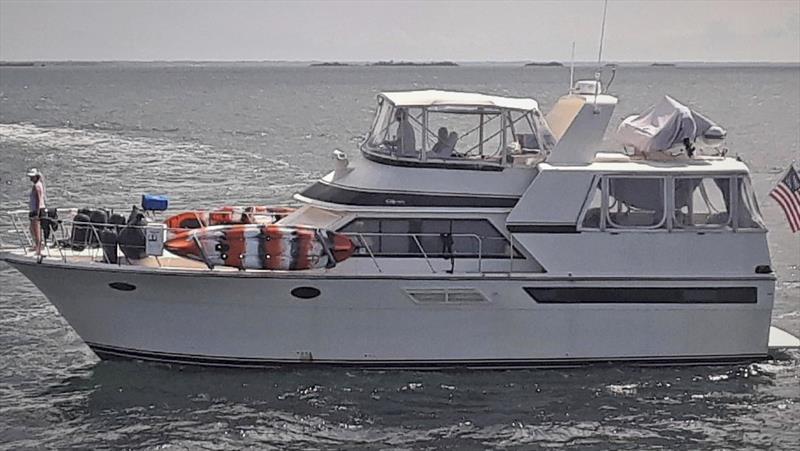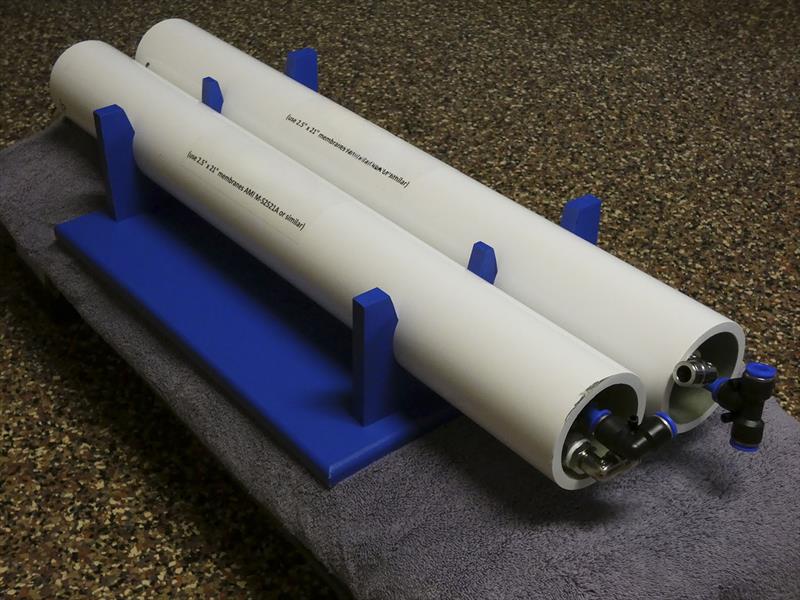
Is a water maker a sensible choice?
by GCA Automated Watermakers 11 Dec 2022 11:19 PST

Boat pic Marlow 53 © GCA Automated Watermakers

Water Maker Package Installation ©GCA Automated Watermakers

Californian No Shoes Bahama enhanced ©GCA Automated Watermakers

21 inch membrane housings ©GCA Automated Watermakers
previous next - 1
- 2
- 3
- 4
- 5
- 6
- 7
- 8
- 9
- 10
Extended Cruising, living aboard, or doing the Loop... whatever you call it, we are now using our boats for more than just a weekend getaway or vacation. Motor Yacht / Power Boat cruising has become very popular.
Imagine the stories the children will have as they grow up on a boat while cruising around the seas. The places they will visit, the things they will experience, and the confidence instilled into those youngsters will make everyone envious.
Whether you are cruising in the Caribbean, or Fiji, or doing the Loop, boat life seems to be the 'In' thing right now. Nothing comes close to the sense of adventure and freedom given to those who choose to take to the seas for an extended vacation or permanent way of life.
Every winter thousands of boaters head to their favorite warm water cruising areas to get away from the cold and enjoy the feeling of freedom provided by anchoring in an isolated cove next to a beautiful island.
But getting away from the safety of your home marina for an extended period takes some planning, education, and good old fashion work. Your boat has to be ready and so do you. Unless you have a very large boat or yacht, there is little chance you will be able to stock your boat with enough supplies to last more than a couple months. Calculating and understanding the cost, weight, usage, and space required for those supplies is crucial for a successful cruise.
Part of that equation is water. How much do you need to stay healthy? How much will you actually use? Do you have enough space to store the water and how heavy is that stored water?
Many Motor Yacht cruisers, have a system on board to convert sea water to fresh water. Commonly called water makers, these systems have become increasingly popular, more reliable, and easier to use. However, the decision to add a water maker or replace an older model requires you to decide if it really makes sense for you. We will look at some of the factors that go into making that decision.
Water consumption by the numbers:
Published average water consumption in the United States is 100 gallons per day per person.
However, most cruisers we've talked with state about 10 - 30 gallons per day per person.
A good rule of thumb for water consumption of a cruising couple or family, over an extended period is 20 gallons per day for each person on the boat. If we convert to liters, the consumption is 75.7 liters per person per day. This includes drinking water, meal prep/cooking, showering, toileting, interior cleaning, and laundry. It does not account for cleaning the boat with fresh water to remove salt spray or the normal grunge that accumulates.
We have talked with folks who claim they only use 8-10 gallons per day per person but most motor yacht owners will quote 10 - 30 gallons.
Motor Yacht owners are usually a little different from the sailboat crowd. They tend to like longer showers, many times have a washer and dryer on board, and will be the ones washing down the boat with fresh water. If there are children on board that daily consumption number always increases. Guests also seem to be more prevalent on Motor Yachts than sailboats and we all know guests will not be as conservative with water use as the cruisers they are visiting.
Let's take a look at water consumption during an extended cruise.
We will assume 2 people on board and a 3 month excursion to the Bahamas from south Florida. The math looks like this:
- Daily consumption: 20 gallons x 2 people = 40 gallons per day
- 90 days x 40 gallons = 3600 gallons needed for the 3 month trip
- Water weighs 8.329 pounds per gallon so 3600 gallons weighs 29,983 pounds.
- A metric conversion shows 13,627 liters and a weight of 13,600 killograms.
How about a shorter trip...
- A 1 month trip will need 1200 gallons of water, weighing 9994 pounds.
- A 1 week trip will need 280 gallons of water, weighing 2332 pounds.
The weight of the water makes stocking enough water for the entire trip unrealistic. Most cruising couples will not have a boat large enough to store water for even a 1 month trip. Water from a marina is probably their only option although most folks will carry a couple cases of bottled H2O.
Unfortunately, in many areas you will need to pay for the water you put in your tank at a marina. It is less expensive than buying bottled water but also may not be as safe. In the Bahamas, many times the water at a marina comes from a cistern which is questionable for consumption without boiling.
If you Google the cost of water in your cruising area you will get a sense of what the cost will be for that 3 month trip. The cost of water in the Bahamas in 2021 ranged from $.40 per gallon to $1.00 per gallon. That 3600 gallons we calculated earlier is going to cost $1,440 - $3,600.
If we use the average cost of the water for the three months we see the money spent on water is about $2,500. Although not inexpensive, it will not represent the highest cost of your trip.
Other considerations related to water while cruising:
While the direct cost of water during your trip is significant, convenience and stress come into play especially if there are children on board. The amount of water remaining in the tank or where you will fill up next is always on your mind. If your boat has a 150 gallon fresh water tank, a couple should be able to make the water last for 3.5 days. You probably don't want to completely empty the tank before looking for water.
If you prefer to stay on anchor in a remote cove instead moving the boat, then you will need to use your tender to transport containers to the closest marina to get water. Depending upon the number of cans you have on board, ferrying 5 gallon containers full of water will be a lot of work. Since most jerry cans have only a 5 gallon capacity, you might be better served to pull anchor and motor over to that marina to fill up your fresh water tank.
One option used by a number of sail boaters is to create a rain catchment system for your boat. Although a reasonable option for sail boaters, motor yacht owners don't seem to like that idea, so we don't see catchment systems on motor yachts.
Most cruisers without a water maker on board will spend considerable time trying to find water and then transporting it to their boat. You will find water at various locations throughout your cruising area but the quality and cost will vary greatly. Remember that water from cisterns is often what you get at a marina in the Bahamas. Before filling your tank at a dock, test the water using a TDS meter to ensure the quality is drinkable. TDS meters display PPM or Parts Per Million of contaminates. The accepted maximum PPM is 500. Any reading above 500 means you should not drink that water and may not want to put it in your tank. Contaminating your tank can mean contaminating the entire water system of the boat so always test the water first. Go to the cruising forums to learn of the best places to get water.
If your cruising plans dictate staying in a marina instead of anchoring, then add some filtration and use the water at the dock. As we stated... test it first. Do some research to learn which marinas are best and have quality water available.
Although many cruisers will do their first cruising season without thinking about a water maker, we have found motor yacht owners, especially those with children on board are already considering a water maker installation before that first cruise. After that first season is over, most motor yacht owners begin to ask, "Does it make sense to install a water maker?" Usually, a motor yacht will have more space on board than a sail boat so location for the system becomes less of an issue. Cost is usually the biggest factor, but let's look at some of the key factors affecting the decision to purchase a water maker.
Water maker costs:
The cost of water makers covers a pretty wide range. Some of the bare bones component only systems can be purchased for about $4,000 while some of the more sophisticated, higher productivity systems can be well over $20,000. Not many cruiser budgets will handle a $20,000 price tag for a water maker.
However, most systems for boats less than 100 feet in length are going to fall into the $4,000 - $12,000 range. You might find a few slightly less and a few slightly more, but there are a significant number of manufacturers on the market in that range. Do your homework... ask others who have a water maker what they like or dislike about the system they have on board their boat. Ask them how often they make water and would they purchase a system again if they had it to do over.
You can save money by purchasing a lower cost system but these are usually just components so you will need to perform all of the assembly yourself. You should have a pretty good working knowledge of how a water maker works before attempting to assemble and install these. As the price increases usually the number and quality of features also increase. Systems above $9,000 seem to be easier to install and the operation becomes more intuitive.
When you start looking at $10,000 or more for a water maker you should consider how long you intend to keep your boat and how many years will you cruise. Remember that $2500 we calculated you would spend on water? If you plan to cruise for 3 or 4 years or more then the water maker will pay for itself. If you are only keeping your boat for a year or so then you need to ask if the convenience / peace-of-mind is worth the investment.
Sometimes that convenience and peace-of-mind plays a larger role than the cost, especially with our wives. Normally we find the wife will not go into the engine room or lazarette to move valves or turn on pumps to operate a water maker. They want to simply push a button.
Selling your boat:
Another factor that should play into your decision relates to selling your boat. Look at Yachtworld.com or ask your boat broker if most other boats similar to your boat have water makers. If similar boats have water makers, you will be at a disadvantage if your boat does not have a water maker when you go to sell it. The opposite can also be true. If the other boats do not have water makers, then having a water maker doesn't add a tremendous amount of selling price to your boat.
Also, the more impressive the water maker system, the more likely it will have a positive impact on the selling price of your boat. A strictly component system that looks like a DIY will not add value to your boat. It is like anything else on your boat... if it looks professional then it adds value. We call it the 'racoon affect'.
We find that having a water maker can be compared to having a bow thruster and not compared to having a microwave. A bow thruster is not needed but it sure makes life easier and usually adds value to your boat. On the other hand, a microwave is an appliance that you know has a limited life span but almost everyone expects the boat to have one. A water maker is a component of the boat that certainly makes life easier, and is expected to last for years, so it should add value.
When all is said and done, having access to good clean water will make the cruising experience more pleasant for everyone on board. A consistent source of good water provides a feeling of freedom not enjoyed by those having to constantly look for water. But you need to decide if the cost is worth it.